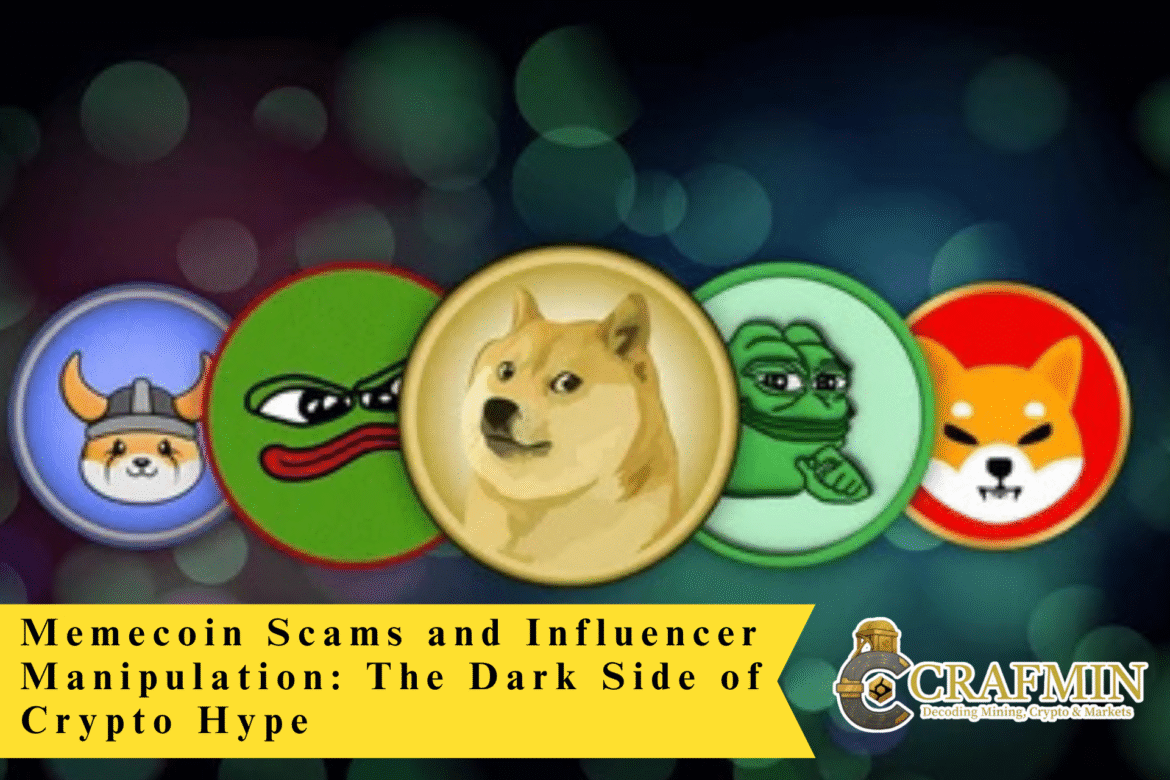
The Dark Side of Memecoins🙁 Credit: Terence Zimwara)
The cryptocurrency world has witnessed a surge in memecoins—tokens often created as jokes or cultural references. While some, like Dogecoin, started innocently, the rise of influencer-driven cryptocurrencies has introduced a darker side to this trend. Notably, figures like Andrew Tate and Donald Trump have been associated with memecoins that have led to significant financial losses for many investors.
The Rise of Influencer-Driven Memecoins
Influencers wield significant power in the digital age, and their endorsements can make or break a product. In the crypto realm, this influence has been harnessed to promote memecoins. Andrew Tate, a controversial internet personality, launched the “Daddy Tate” (DADDY) coin, which experienced rapid price fluctuations. Similarly, Donald Trump’s $TRUMP coin saw a meteoric rise in value, only to plummet shortly after. These instances highlight how influencer endorsements can lead to volatile market behaviors.
Pump-and-Dump Schemes Explained

Memecoin fraud just became easier:
A common tactic in the memecoin world is the “pump-and-dump” scheme. Here’s how it typically unfolds:
- Creation and Promotion: An influencer or group creates a new memecoin and promotes it heavily on social media platforms.
- Price Surge: As followers invest, the coin’s price skyrockets due to increased demand.
- Dumping: The creators sell off their holdings at the peak, making substantial profits.
- Crash: With the creators’ exit, the coin’s value plummets, leaving late investors with significant losses.
This cycle has been observed in several memecoin ventures, leading to widespread skepticism about their legitimacy.
Case Studies: Andrew Tate and Donald Trump’s Memecoins
Andrew Tate’s DADDY Coin:
Andrew Tate’s DADDY coin was promoted as a symbol of male empowerment. However, it quickly became evident that the coin’s value was tied more to hype than substance. Reports indicate that the coin underwent multiple pump-and-dump cycles, leaving many investors at a loss.
Donald Trump’s $TRUMP Coin:
Donald Trump’s foray into the crypto world with the $TRUMP coin raised eyebrows. Launched just before his second inauguration, the coin’s value soared, driven by promises of exclusive benefits like dinners and tours. However, with 80% of the coin’s supply held by Trump and his associates, concerns about market manipulation and insider profits emerged. Many small investors suffered losses as the coin’s value declined.
The Role of Social Media in Crypto Manipulation
Social media platforms have become breeding grounds for crypto promotions. Influencers leverage their massive followings to promote new coins, often without disclosing their financial interests. This lack of transparency can mislead followers into believing in the legitimacy of these ventures. The rapid spread of information (and misinformation) on platforms like Twitter, Instagram, and TikTok exacerbates the problem, making it challenging for investors to discern genuine opportunities from scams.
Regulatory Challenges and Investor Protection
The decentralized nature of cryptocurrencies poses significant challenges for regulators. While agencies like the SEC have taken steps to address fraudulent activities, the rapid evolution of the crypto landscape often outpaces regulatory measures. Furthermore, political figures’ involvement in crypto ventures, as seen with Donald Trump, complicates regulatory efforts due to potential conflicts of interest.
Also Read: Standard Chartered Predicts Solana Price Surge to $500 by 2029 Despite Short-Term Dips
Ethical Concerns in the Crypto Space
The ethical implications of influencer-driven memecoins are profound. Promoting financial products without adequate disclosures or understanding can lead to significant harm. Many influencers lack the financial expertise to assess the risks associated with these ventures, yet their endorsements can sway thousands. This dynamic raises questions about responsibility and accountability in the digital age.
The Importance of Financial Literacy
In the face of these challenges, financial literacy becomes paramount. Investors must approach crypto ventures with skepticism and conduct thorough research before investing. Understanding the mechanics of the market, recognizing red flags, and being aware of common scams can protect individuals from significant financial losses. Educational initiatives and resources can empower investors to make informed decisions in the volatile world of cryptocurrencies.
Conclusion
The allure of quick profits in the crypto world, amplified by influencer endorsements, has led many into financial pitfalls. Memecoins, while often presented as harmless fun, can mask complex schemes designed to exploit unsuspecting investors. As the crypto landscape continues to evolve, a combination of robust regulation, ethical promotion practices, and enhanced financial literacy will be essential in safeguarding investors and ensuring the integrity of the market.

